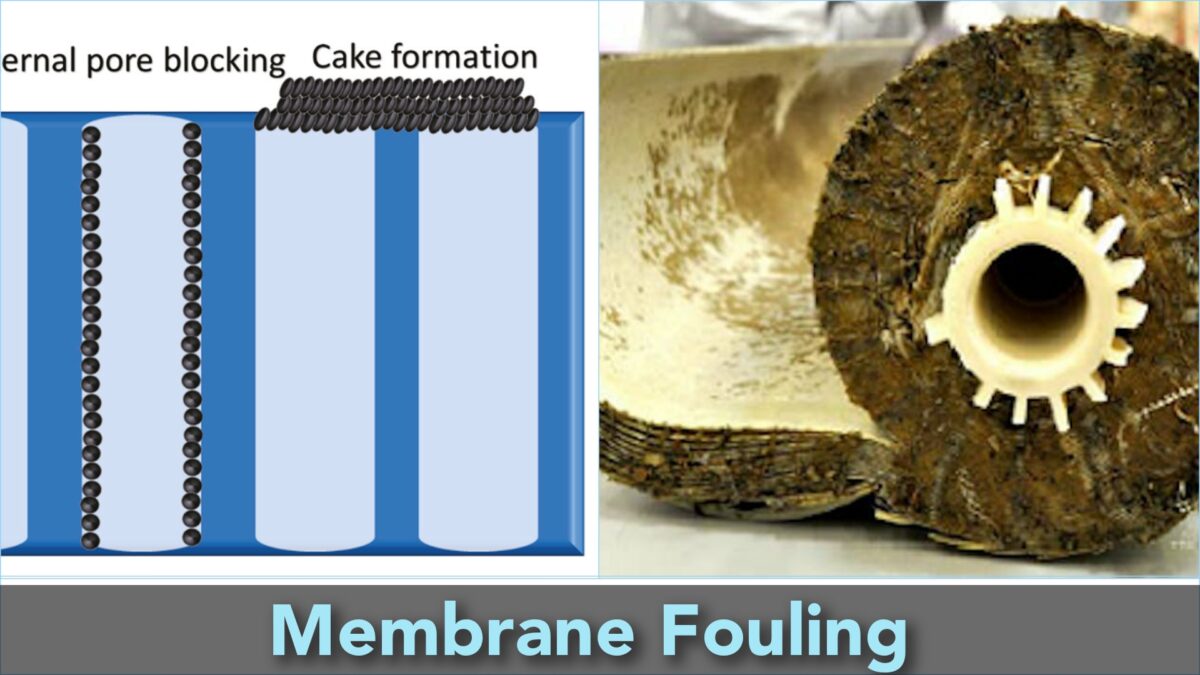Table of Contents
What Is Membrane Fouling?
Membrane fouling is a common problem that can happen in various membrane filtration processes. It occurs when particles or substances in the feed solution stick to the surface or pores of the membrane. This causes the membrane to become clogged or blocked, reducing its performance and making it less effective.

There are different types of foulants that can cause membrane fouling, including colloidal, biological, organic, and scaling substances. When fouling happens, it can lead to a decrease in permeate flux and an increase in the transmembrane pressure. Severe fouling may require intense cleaning or membrane replacement, which can increase operating costs.
There are several strategies to reduce membrane fouling, such as pretreating the feed solution, optimizing operating conditions, and cleaning the membrane regularly. Proper selection of the membrane material and pore size can also help reduce fouling.
Fouling can be reversible or irreversible, depending on the strength of attachment of the particles to the membrane surface. Reversible fouling can be removed by a strong shear force or backwashing, but irreversible fouling cannot be removed by physical cleaning.
Types Of Membrane Fouling
1. Particulate Fouling
Particulate fouling occurs when particles larger than the membrane pore size accumulate on the membrane surface or within the pores. This type of fouling can be caused by suspended solids in the feedwater, microbial growth, or chemical precipitation.
2. Colloidal Fouling
Colloidal fouling happens when colloidal particles, which are smaller than 0.1 microns, adhere to the membrane surface. This type of fouling is often caused by high levels of organic matter in the feedwater.
3. Scaling Fouling
Scaling fouling occurs when minerals and other inorganic substances precipitate out of the feedwater and accumulate on the membrane surface or within the pores. This type of fouling is often caused by high levels of dissolved salts in the feedwater.
4. Biofouling
Biofouling occurs when microorganisms, such as bacteria, algae, and fungi, attach to the membrane surface and form a biofilm. This type of fouling can be caused by high levels of organic matter in the feedwater, low levels of disinfectant, or inadequate cleaning.
5. Chemical Fouling
Chemical fouling happens when chemical compounds in the feedwater react with the membrane surface, leading to the formation of a layer that restricts membrane permeability. Strong acids or bases exposure or organic solvent exposure can cause this type of fouling.
Causes Of Membrane Fouling
1. Suspended Solids
Suspended solids in the feedwater can deposit on the surface of the membrane, causing blockages in feed channels and reducing permeate flow. Silt, clay, silica, iron, manganese, and aluminum are some of the common suspended solids that contribute to fouling. Cleaning fouled membranes often involves the use of disperants and surfactants.
2. Scaling
Scaling occurs when substances such as calcium, barium, strontium, and silica become supersaturated on the membrane surface, reducing the amount of water that can pass through the feed channel and permeate through the membrane. Low pH acidic solutions are often applied to the membrane for cleaning, and more specialized techniques may be required for silica fouling.
3. Organic Fouling
Naturally occurring organics found in surface water can also contribute to membrane fouling. Coagulants, flocking agents, and incompatible pretreatment chemicals can also cause organic fouling. The cleaning process for organics typically involves the application of a high pH solution, although more specialized methods may be required depending on the type of foulant.
4. Biological Fouling
Biological material, including organic slimes and bacteria, can grow on the surface of the membrane and reduce feed channel and permeate flows. To remove biological fouling, a high pH cleaner combined with disperants at high temperatures and applied at turbulent flow rates is often used. In some cases, overnight soaking may be necessary.
5. Oxidation
Oxidizers such as chlorine, chloramines, ozone, hydrogen peroxide, and other chemicals can attack the structure of the membrane’s concentrate layer, particularly the thin film composite layer. Iron and copper in the feed water can increase the rate of oxidation. Maintaining chlorine concentrations at less than 0.01 ppm is one precaution that can be taken to minimize the damage from oxidation.
6. pH Extremes
Extremes in pH balance can cause hydrolysis, a chemical change that decomposes the membrane. The thin film composite layer of the membrane can operate at a pH level of 2-11, while the pH range for cellulose acetate membranes is 5-8. Beyond these ranges, hydrolysis occurs, damaging the membrane polymeric structure and the glue joints on membrane leaves and the feed channel spacer.
7. Temperature
Thermal damage can occur when the membrane is subjected to temperatures beyond its maximum limit. For cellulose acetate membranes, the maximum temperature limit is 35 degrees Celsius, and for most thin film composites, it is 45 degrees Celsius. Exceeding these limits renders the membrane useless.
How Prevent Membrane Fouling
1. Proper Maintenance and Cleaning Procedures
One of the most effective ways to prevent membrane fouling is by following proper maintenance and cleaning procedures. This can include regular backwashing, chemical cleaning, and other maintenance tasks that are specific to the type of membrane being used. Regular maintenance and cleaning can help remove any accumulated solids, biofilms, or other contaminants that can lead to fouling.
2. Optimization of Operating Conditions
Another important factor that can prevent membrane fouling is optimizing the operating conditions of the system. This can involve adjusting the feed flow rate, pH, temperature, and other parameters to ensure that the membrane is operating within its optimal range. By optimizing the operating conditions, the risk of fouling can be reduced and the performance of the membrane can be improved.
3. Pre-treatment of Feedwater
The quality of the feedwater can also have a significant impact on membrane fouling. Pre-treatment of the feedwater can help remove any suspended solids, organic matter, or other contaminants that can lead to fouling. Common pre-treatment methods include sedimentation, coagulation, and filtration. By ensuring that the feedwater is properly treated before it enters the membrane system, the risk of fouling can be significantly reduced.
